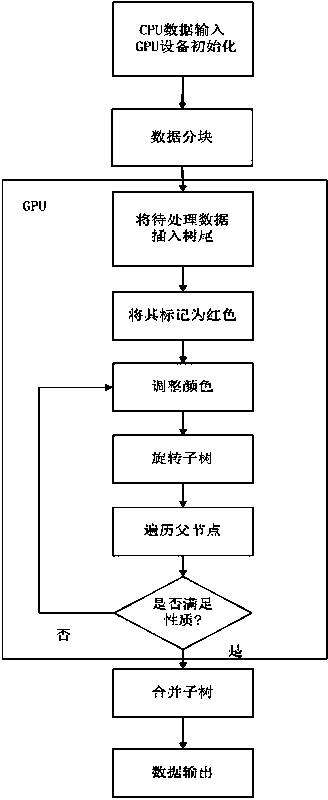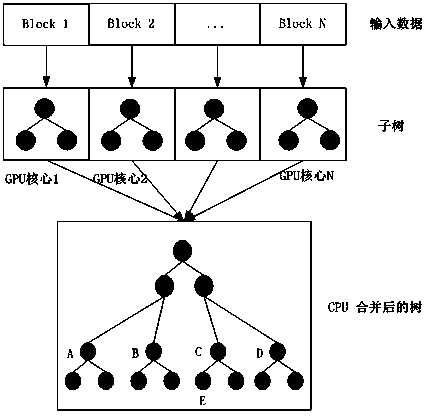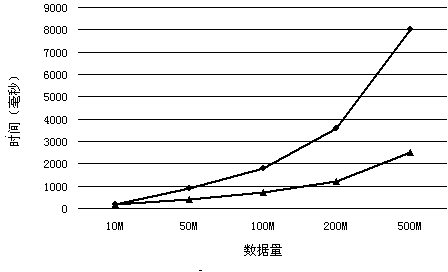Open computing language (OpenCL)-based red-black tree acceleration algorithm
A red-black tree and algorithm technology, applied in computing, special data processing applications, instruments, etc., can solve the problems of time-consuming red-black trees and large computing time, and achieve a large amount of calculation, shortened tree-building time, and rapid establishment. Effect
- Summary
- Abstract
- Description
- Claims
- Application Information
AI Technical Summary
Problems solved by technology
Method used
Image
Examples
Embodiment 1
[0033] Embodiment one: a preferred embodiment of the red-black tree acceleration method based on OpenCL is described as follows in conjunction with accompanying drawing, and its concrete implementation method can be divided into the following steps:
[0034] Step 1: CPU data input, GPU device initialization: find hardware devices that support OpenCL, create memory objects required for program execution, and allocate threads according to the number of cores supported by the device.
[0035] Step 2: Data segmentation: divide the original massive data into blocks according to the allocated threads on the GPU. This experiment uses a GT420 graphics card, the hardware supports 512 threads, and the data volume is m=100M, so each thread allocates data separately The size is 200KB.
[0036] Step 3: Assign chunked data to each thread and perform the following operations:
[0037] 1) Insert the data value to be inserted directly into the end of the tree.
[0038] 2) Mark the color attr...
Embodiment 2
[0049] Step 1: CPU data input, GPU device initialization: find hardware devices that support OpenCL, create memory objects required for program execution, and allocate threads according to the number of cores supported by the device.
[0050] Step 2: Data chunking: Divide the original massive data into chunks according to the allocated threads on the GPU. The hardware supports 512 threads, and the data volume is m=200M. Therefore, each thread allocates a data volume of 400KB.
[0051] Further calculations are performed according to steps 3 to 5 in the first embodiment.
[0052] For the 200M data volume used in this example, the total time spent on tree building is 1121ms, while the total time spent on tree building by the standard red-black tree algorithm on the CPU side is 3689ms, which is 2568ms less than the time-consuming comparison, and the computing efficiency is increased by 69.6%.
[0053] Experimental results
[0054] The present invention has been carried out based ...
PUM
 Login to View More
Login to View More Abstract
Description
Claims
Application Information
 Login to View More
Login to View More - Generate Ideas
- Intellectual Property
- Life Sciences
- Materials
- Tech Scout
- Unparalleled Data Quality
- Higher Quality Content
- 60% Fewer Hallucinations
Browse by: Latest US Patents, China's latest patents, Technical Efficacy Thesaurus, Application Domain, Technology Topic, Popular Technical Reports.
© 2025 PatSnap. All rights reserved.Legal|Privacy policy|Modern Slavery Act Transparency Statement|Sitemap|About US| Contact US: help@patsnap.com



